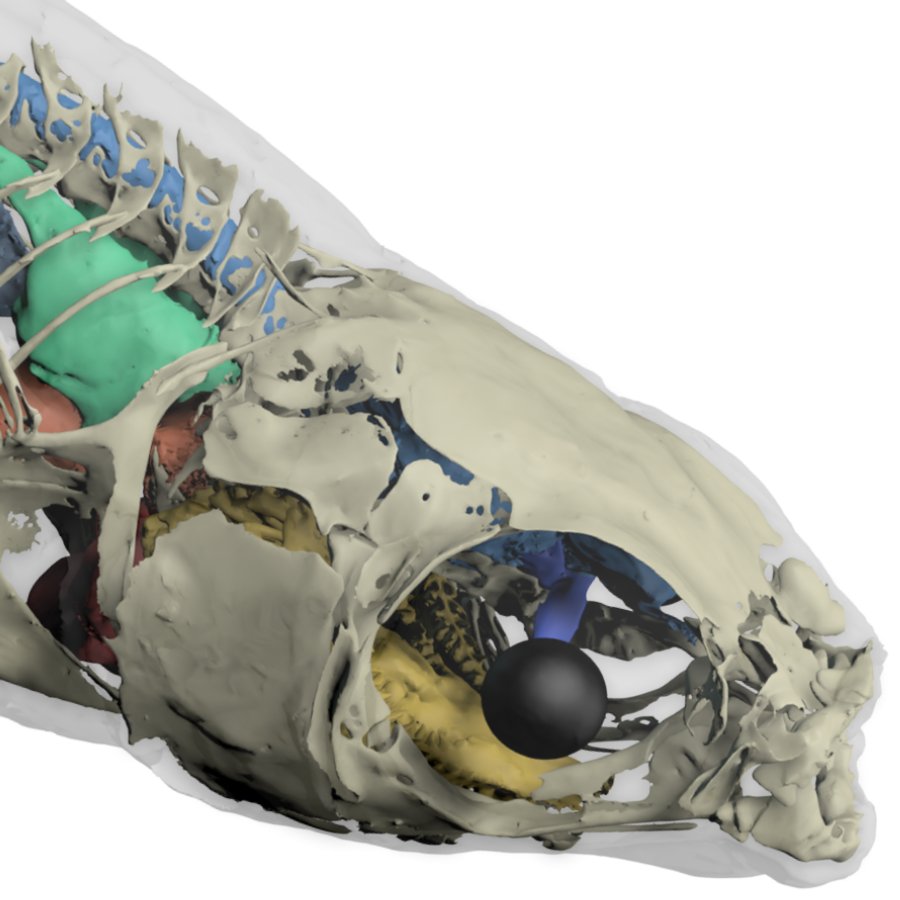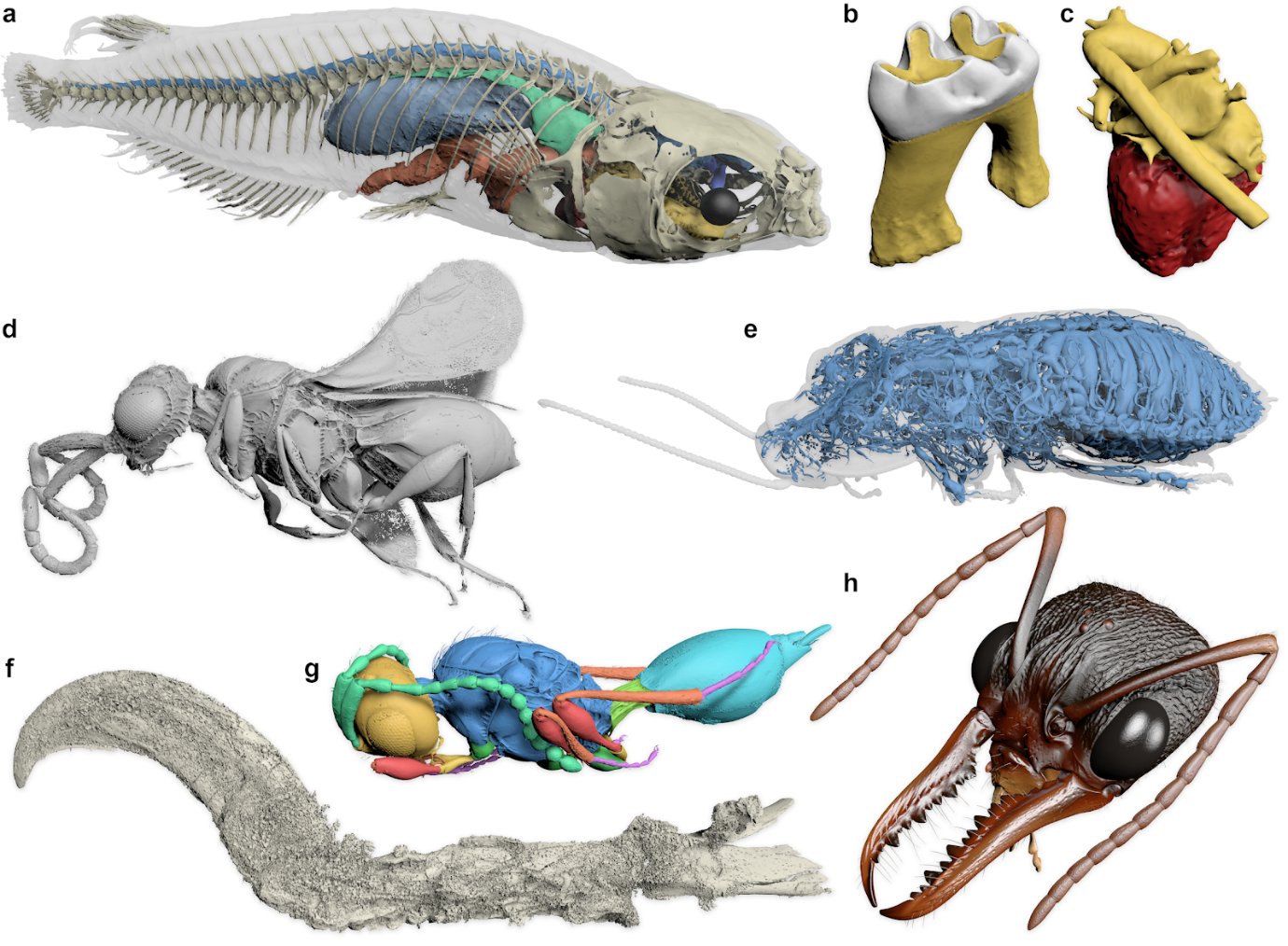An ever-increasing number of medical, scientific and engineering disciplines rely on the volumetric analysis of imaging data, for example from X-ray tomography (CT), magnetic resonance imaging (MRI) or optical microscopy, in order to isolate individual structures from the 3D volume by segmentation.
An interdisciplinary team of researchers from the Heidelberg Institute for Theoretical Studies (HITS), Heidelberg University, the IPS at KIT and the Technical University of Darmstadt has developed Biomedisa, an open-source online platform for biomedical image segmentation. The explicit aim was to create a freely available, user-friendly and widely applicable tool to improve the laborious manual segmentation procedures that still dominate 3D image analysis in many biomedical disciplines. The platform is accessible through a web browser and requires no complex and tedious configuration of software and model parameters.
|
Biomedisa examples. a Medaka fish with segmented skeleton and selected internal organs (based on µCT scan). b Mouse molar tooth showing enamel (white) and dentine (yellow) (µCT). c Human heart with segmented heart muscle and blood vessels (MRI). d Fossil parasitoid wasp from Baltic amber (SR-µCT). e Tracheal system of a hissing cockroach (µCT). f Claw of a theropod dinosaur from Burmese amber (SR-µCT). g Fossil parasitoid wasp preserved inside a mineralized fly pupa (SR-µCT). h Head of an Australian bull ant (SR-µCT). |
Biomedisa was developed for biological and medical CT and MRI but it is generally suitable for many more types of volumetric image data, e.g. from confocal laser scanning microscopy (CLSM), focused ion beam scanning electron microscopy (FIB-SEM) or histological imaging, and for 3D data from other disciplines such as geology, materials science and non-destructive testing. Biomedisa can also be used to train a convolutional neural network for fully automatic segmentation when segmenting a large number of similar structures.
Further reading
Lösel, P.D., van de Kamp, T., Jayme, A. et al. Introducing Biomedisa as an open-source online platform for biomedical image segmentation.
Nature Communications 11, 5577 (2020). https://doi.org/10.1038/s41467-020-19303-w
Biomedisa online platform: https://biomedisa.org/
Biomedisa on Twitter: https://twitter.com/biomedisa


